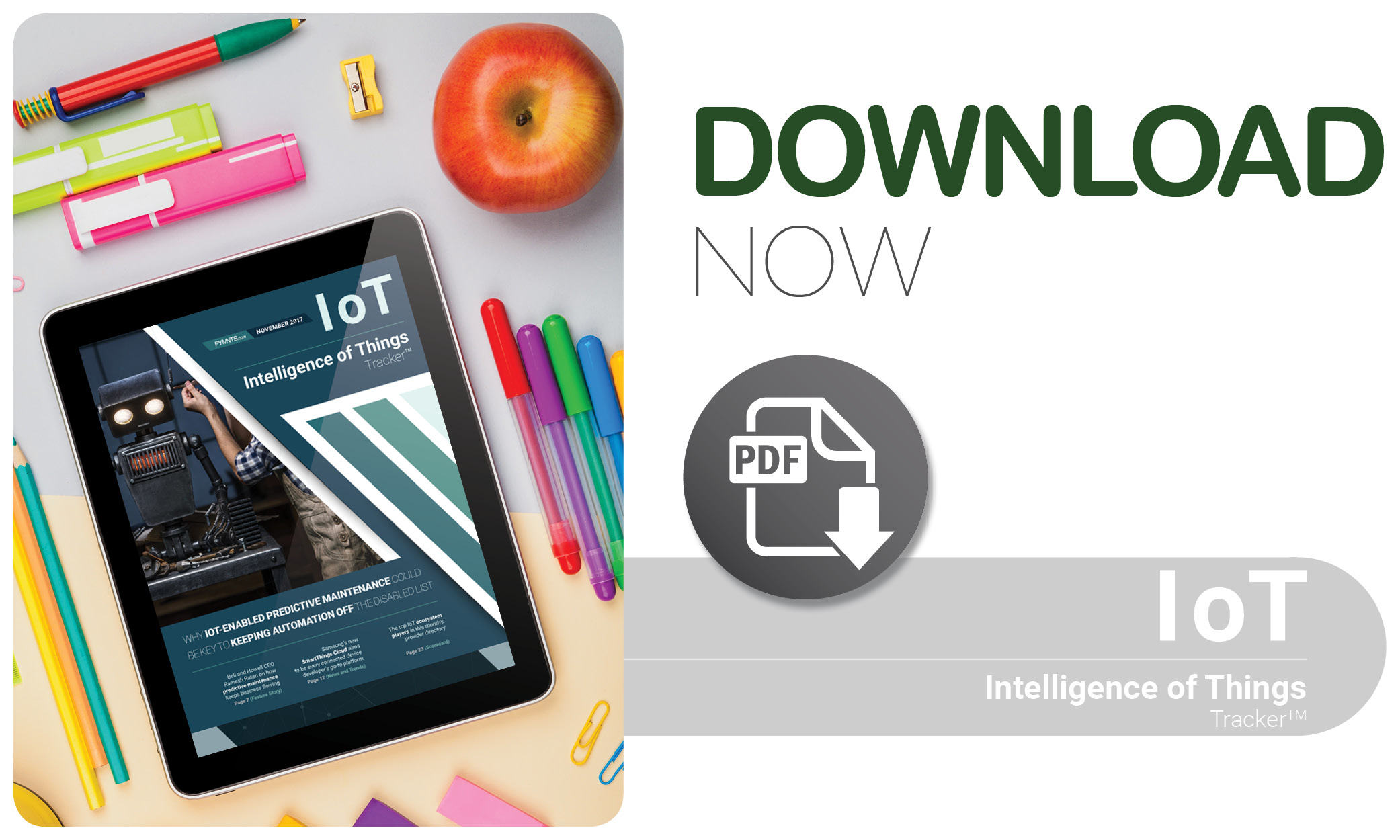NEW REPORT: Using IoT To Fix Things Before They Break
Handing off product packaging to an automated system is a relief, but returning from a meeting to find a treadmill on the fritz and product sitting still — all while customers call in, clamoring for their shipments — is not.
That’s the kind of problem with which businesses are wrestling as they find ways to pass off their repetitive tasks or “chores” to machines, allowing the humans to focus instead on the more nuanced responsibilities. When implementing time-saving machines, what’s a business to do to ensure equipment failure doesn’t turn automation into only frustration?
The November edition of the PYMNTS.com Intelligence of Things Tracker™ charts the latest news on how companies are increasingly turning to IoT to predict when and how their equipment is going to break — and to let them swoop in to the rescue before that expensive oil drill or package sorting machine stutters to a halt, snarling operations and revenue in the blink of an eye.
Around the IoT world
From smart homes and smart cars to intelligent industrial machines that can have their ailments remotely diagnosed, IoT is a rapidly growing field. In fact, the space is expected to reach $1.29 trillion in worldwide market spending by 2020.
What will the IoT look like by that time? Major firms seem increasingly convinced that 5G will be a big part of the future of the IoT industry.
Chilean telecom firm Entel is making widespread updates to get ready for a 5G transition — meaning becoming-the-first-operator-to-bring-MIMO-nationwide-in-Latin-America kind of updates.
Meanwhile, multinational telecom company Huawei and German mobile communication provider Telefónica Deutschland are seeking to ensure this is no 5G cargo cult. The companies announced what they’re calling the “world’s first” 5G-oriented antenna deployment solution.
For a roundup of recent happenings in the IoT space, from in-home deliveries to a new autonomous car immune system, check out the Tracker’s News and Trends section.
IoT today keeps the doctor away
To keep business — and the associated machinery — whirring, it pays to have an inside view of each machine and its data to forecast when something could go wrong.
In a recent interview with PYMNTS for this month’s IoT Tracker’s feature story, Ramesh Ratan, CEO of technology solutions provider Bell and Howell, and Don Bullock, the firm’s vice president of technical and professional services, discussed how predictive maintenance is bringing greater safety, reliability and productivity to a wide range of businesses — and how car lovers can bring their favorite old Ford Model A-1 with them into the IoT world.
“The beauty of the PTC-ThingWorx platform is it’s going to give us the ability to know beforehand when the machine is going to fail, and we can proactively go in at a time that is convenient to our customer, and replace components and do maintenance, and know that the machine is going to have very high reliability,” Bullock said of the platform his firm selected to support its remote mechatronic machine diagnosis.
To read the story, download the November IoT Tracker.
. . . . . . . . . . . . . . . .
To download the latest edition of the PYMNTS.com Intelligence of Things Tracker™, click the button below.
The PYMNTS.com Intelligence of Things Tracker™ showcases companies that are leading the way in all aspects of the Intelligence of Things. Every month, the Tracker examines what these companies are doing across the ecosystem and in several categories, including Personal, Home, Retail, Transportation, Wearable, Mobile, Infrastructure, Data and more.

